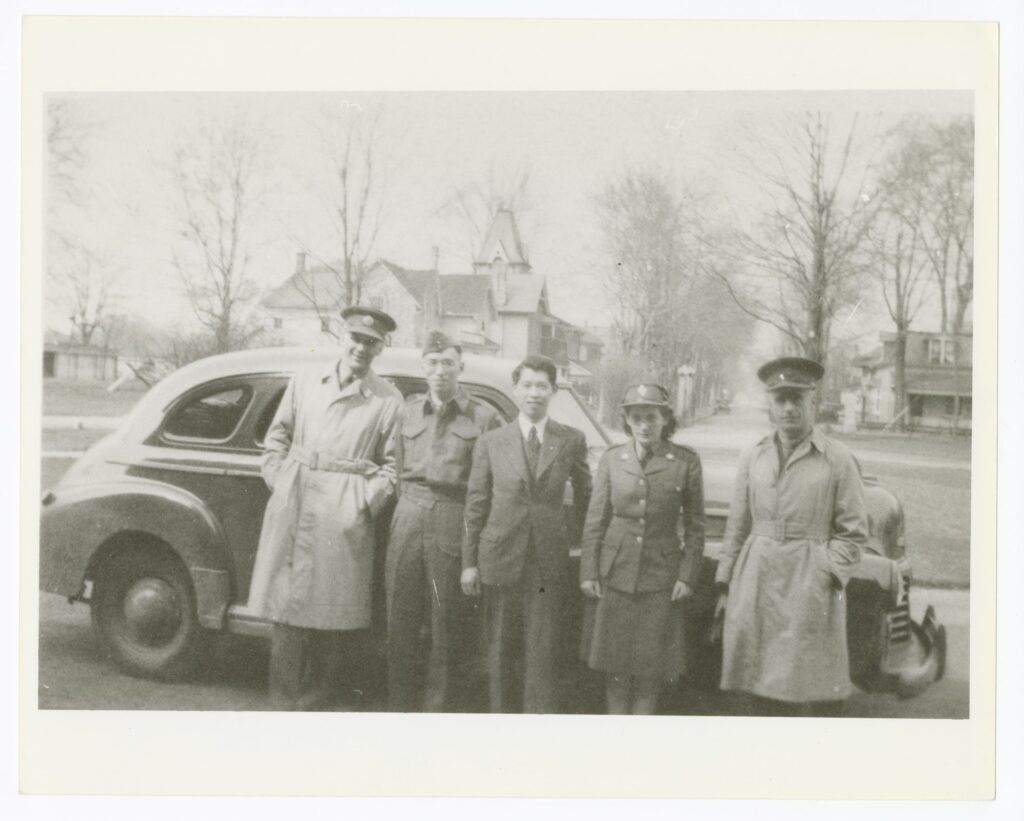Second World War / Japanese Canadian Military Service / Enlistment for Pacific Service
The Australian Army approached Canada first, in March 1944, about the availability of nisei soldiers with a good knowledge of Japanese. The Australian Director of Military Intelligence requested the loan of up to 200 Japanese Canadian soldiers for intelligence work (Ito, 1984, p. 164). The Canadian military attaché was embarrassed to admit that Japanese Canadians were not allowed in the Canadian Army, and that the reason was political, not because they couldn’t be trusted (Ito, 1984, p. 163). The attaché later recommended that Australia, not Canada, enlist the Japanese Canadians.
The second request came from Captain Don Mollison of the British Army in Burma. Expecting that it would be easy to request Japanese linguists from the Canadian Army, he was shocked, like his Australian counterpart, to learn that Japanese Canadians were excluded from the military. He also learned from the Canadian representative of British Security Coordination that although Japanese Canadians were the most loyal ethnic group in Canada, nisei might be allowed to join the British Army, but not the Canadian Army (Ito, 1984, p. 168).
The Japanese Canadian Committee for Democracy continued to send letters to the Minister of National Defence, offering the services of Japanese Canadians in the armed forces.
By July 1944, the attitude of the Cabinet War Committee was changing, recommending the enlistment of nisei with language abilities to help in the Far East with intelligence and interrogation of POWs (Ito, 1984, p. 168). The Canadian Army began secretly compiling lists of nisei willing to volunteer, with the help of the Japanese Canadian Committee for Democracy (Library and Archives Canada, n.d., Japanese Volunteers for Canadian Armed Forces). The names of Eichi Oike, Louis Suzuki, Frank Takayesu, and Kiyoshi Kitagawa were incorrectly spelled in these volunteer lists.
.
At the same time, Admiral Mountbatten, the supreme allied commander of Southeast Asia Command (SEAC) in India, requested nisei to serve in propaganda units in the Special Operations Executive (SOE) established by Churchill to operate behind enemy lines. Canada responded that nisei were not allowed to be enlisted in Canada and they should be enlisted in the Indian Army (Theurer and Oue, 2021, p. 232).
In October 1944, the Cabinet War Committee again refused to permit nisei enlistment, but permitted them to enlist in the Armed Forces of other members of the United Nations (Ito, 1984, p. 175).
Captain Mollison was only able to find twelve nisei who were willing to sign up as members of the British army in Burma (Ito, 1984, p. 174). He acknowledged that most nisei would want to serve as Canadians, not in uniforms of other countries. There was no guarantee that they would be allowed to keep their Canadian citizenship on their return. And if they could return to Canada after the war, they could not demand the vote. Mollison was becoming exasperated, as the need for nisei linguists overseas accelerated. As a last resort, he sent a message to William Stevenson of British Security Coordination to request that Churchill pressure the Canadian government to let nisei enlist (Ito, 1984, p. 176)
The Cabinet War Committee reluctantly agreed on January 17, 1945 to enlist 100 Japanese Canadians in the Canadian Army. This decision was made in secret (Ito, 176), and was not publicized.
Enlistment began in March in Toronto. Eiji Yatabe, one of the first nisei recruits, accompanied Lieutenant Cecil Thomas and Major H.J. Duchesnay throughout southern Ontario to recruit other nisei over three days. Many of the recruited Japanese Canadians had been interned by the government they were now pledging to serve. Some nisei that signed up were disowned by their families, who were very bitter over the internment (Broadfoot, 1977). Some of the nisei who enlisted had brothers in Japan who were fighting on the opposite side. Two of the enlisted soldiers came directly from internment camps to volunteer (Ito, 1984, p. 250). The greatest regret of the recruits was that enlistment was for linguistic purposes only, rather than combat.

Min Yatabe said:
“When the enlistment decision was announced, most nisei lads welcomed it as an opportunity to demonstrate our loyalty to Canada and thus show our community in a good light to the country of our birth.”
Nisei recruits were placed in two groups – the so-called India group under the British officer Captain Mollison, and the S-20 group, sent to Brantford for basic training and then to the S-20 Japanese language school prior to service. The India group included the 12 who had previously volunteered, plus 23 who were sent to India soon after (Oki, 1967). Three nisei who lived in the Okanagan (outside of the Protected Area) were sent to Melbourne, Australia (Ito, 1984, p. 191).